
Sacha Koolen Wouter Noordijk








Modern chefs will be making a much bigger effort to help protect the environment they source their products from. They feel a sense of responsibility for transferring food awareness to their guests. Currently, the first step towards bettering our understanding of nature seems to be to put oneself in the shoes of the farmer.







It is both a mini-course in food waste and an exploration of local products. For the ultimate farm-to-table experience, guests can head into the field before dinner to pick their own seasonal produce and have a taste. Barber's mission is to create more awareness of the impact of everyday food decisions. He believes it is not enough to grow a single product sustainably. Agriculture should be considered a system where diversity and variety are key.
Restaurants Blue Hill and Blue Hill at Stone Barns are separated by an hour’s drive. Blue Hill is located in the centre of the Big Apple. Blue Hill at Stone Barns is out in the countryside. Stone Barns is nothing like any other restaurant. Firstly, it is a farm. Dining amidst the fields of this establishment is an ode to everything that comes from the surrounding land.
Blue Hill and Blue Hill at Stone Barns Chef and co-owner, Dan Barber








With its 65 vegetables varieties, 16 cows, 4 Mangalica pigs, 200 chickens, 150 geese, 500 ducks and 4 rabbits, he is currently supplying his four farm-to-table restaurants in Denmark: Relæ, Manfreds, BÆST and Mirabelle. The farm doesn’t just revolve around supplying high-quality fresh produce. Puglisi wants to stimulate the dialogue between chefs and farmers. This is intended to cause a change in how the world of food grows, distributes and thinks.
Chef Christian Puglisi has always felt the responsibility to work in a sustainable way. Whether it be his staff, future relations, his environment or the entire planet. But he says that this sense of responsibility increased when he became a father. It was a logical next step for him to set up an organic farm. In 2016 Puglisi founded Farm of Ideas, 45 minutes away from Copenhagen.
Former sous-chef NOMA, restaurateur Relae community en founder Farm of Ideas, Christian Puglisi
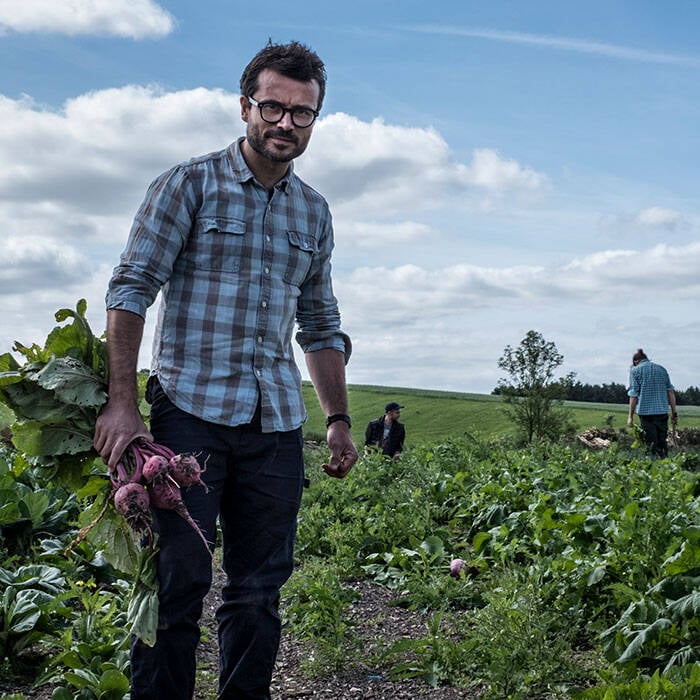








Boundaries between nature and modern architecture are transcended. Nature literally enters the interior. Atxa understands that integration between farmer and chef is a necessity. ‘We need to start collaborating with farmers, fishermen and cultivators in order to safeguard the future. We need to work towards sustainability and awareness among food professionals. Chefs need to realise that what they do today affects tomorrow.’
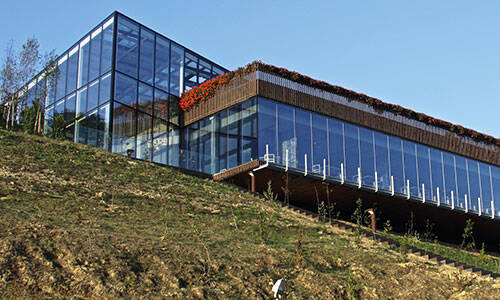
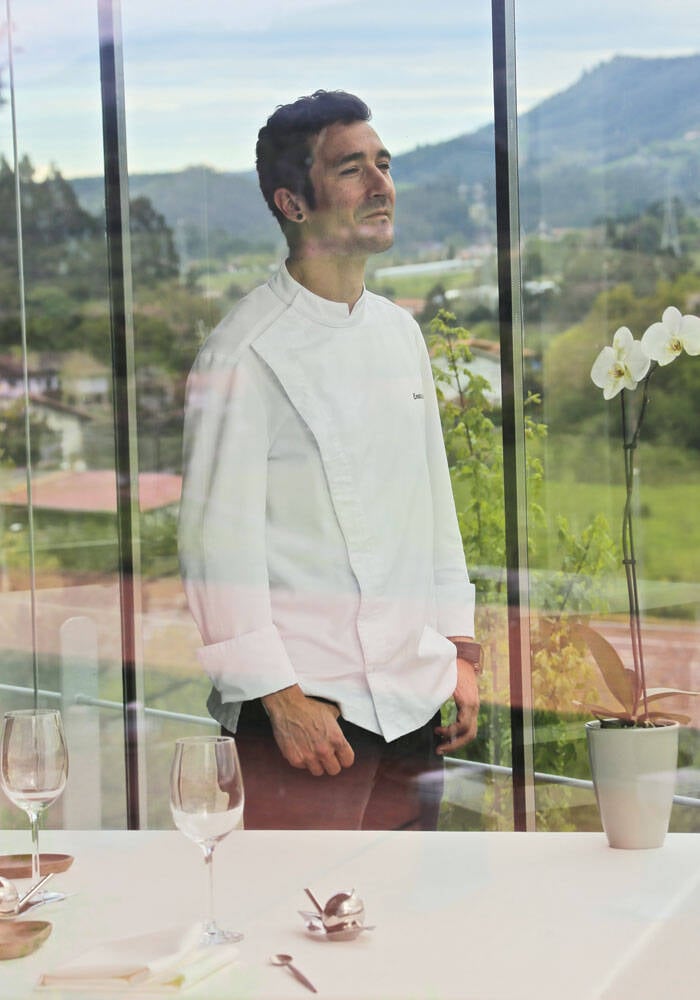
Azurmendi is not only a restaurant but a sustainable technology centre as well. And it is for good reason that chef Eneko Atxa was granted the Sustainable Restaurant Award with this ecological concept. They planted 800 trees in order to reduce CO2 emissions. Rainwater and sunlight are stored and reused for their garden and greenhouse where their own vegetables and herbs are freshly harvested.
Chef at three-Michelin starred sustainable restaurant Azurmendi, Eneko Atxa
MIXED WITH NATURE







Chef Emile van der Staak is the only client of this edible jungle. Van der Staak pays a visit to the food forest every week. In order to absorb the seasons and taste nature. A moment of reflection and inspiration. Van Eck's harvest is put on a pedestal at his restaurant De Nieuwe Winkel. De Nieuwe Winkel will open its doors this spring in a centuries-old orphanage in the Dutch city of Nijmegen. Apparently both farmer Van Eck and chef Van der Staak have turned finding hidden gems into a sport.
Voedselbos Ketelbroek in the Netherlands is home to over 350 varieties of plants, trees, shrubs and herbal plants all of which have something edible to offer. Wouter van Eck farms this food paradise but he ploughs nor sows. And he certainly doesn’t spray. These ‘fields’ are only planted and harvested endlessly. He considers it the ideal place for the lazy farmer.
Chef-botanist Emile van der Staak and food-forest expert Wouter van Eck

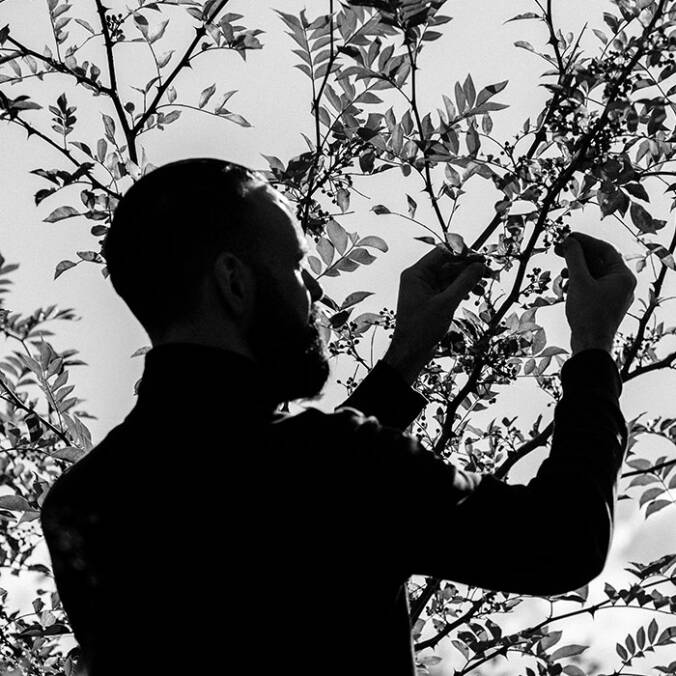



Every lunch and dinner is prepared with freshly harvested produce. The dishes feature these vegetables prominently. ‘For our industry, the greatest challenge for the future lies in preserving ingredients sourced from nature, because we are currently working very hard to destroy it. We are murdering, pillaging to eat,’ Mauro Colagreco shared with Food Inspiration.
On the southern border between France and Italy, you will find three-starred restaurant Mirazur. Mirazur is located by the edge of the Mediterranean Sea, a food garden and the mountains. Chef Colagreco's menu reflects this triad. In addition, everything they serve revolves around products available in nature at that moment in time. Mirazur's vegetable garden includes 35 different tomato varieties.
Chef at the three-Michelin starred restaurant Mirazur, Mauro Colagreco
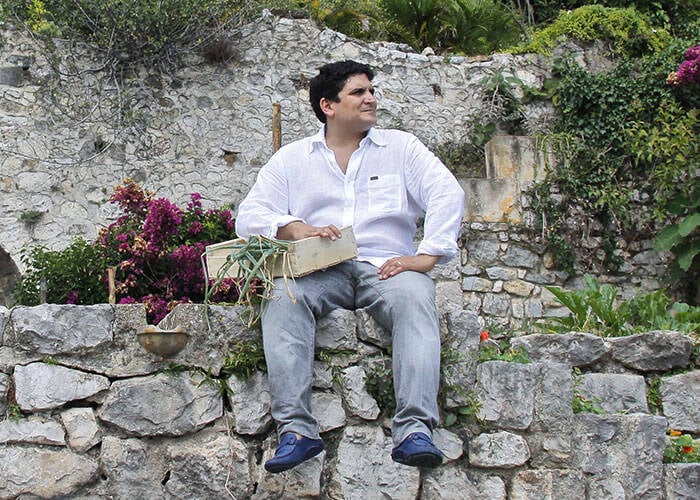
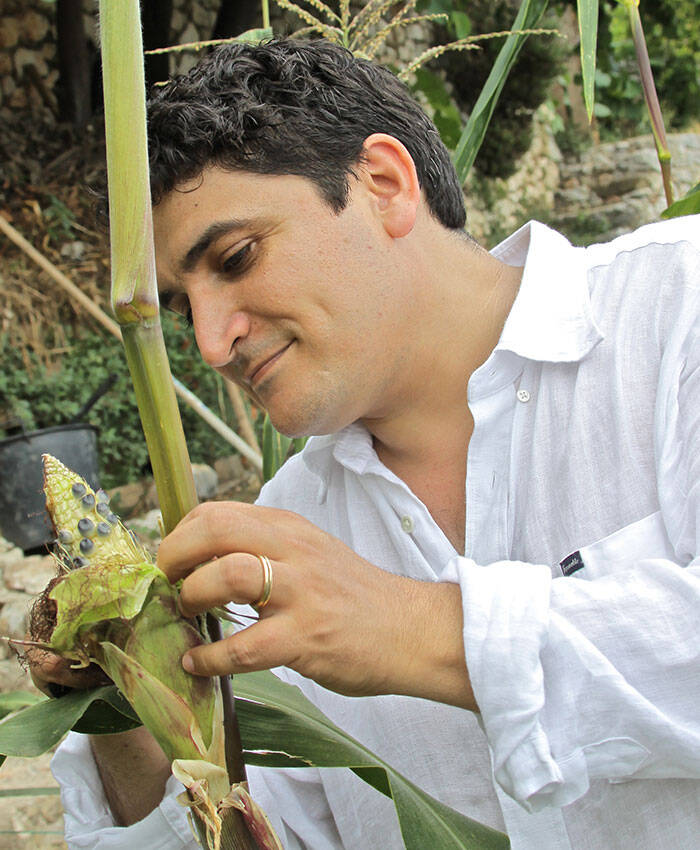





It is both a mini-course in food waste and an exploration of local products. For the ultimate farm-to-table experience, guests can head into the field before dinner to pick their own seasonal produce and have a taste. Barber's mission is to create more awareness of the impact of everyday food decisions. He believes it is not enough to grow a single product sustainably. Agriculture should be considered a system where diversity and variety are key.
Restaurants Blue Hill and Blue Hill at Stone Barns are separated by an hour’s drive. Blue Hill is located in the centre of the Big Apple. Blue Hill at Stone Barns is out in the countryside. Stone Barns is nothing like any other restaurant. Firstly, it is a farm. Dining amidst the fields of this establishment is an ode to everything that comes from the surrounding land.


Blue Hill and Blue Hill at Stone Barns Chef and co-owner, Dan Barber






With its 65 vegetables varieties,
16 cows, 4 Mangalica pigs, 200 chickens, 150 geese, 500 ducks and 4 rabbits, he is currently supplying his four farm-to-table restaurants in Denmark: Relæ, Manfreds, BÆST and Mirabelle. The farm doesn’t just revolve around supplying high-quality fresh produce. Puglisi wants to stimulate the dialogue between chefs and farmers. This is intended to cause a change in how the world of food grows, distributes and thinks.
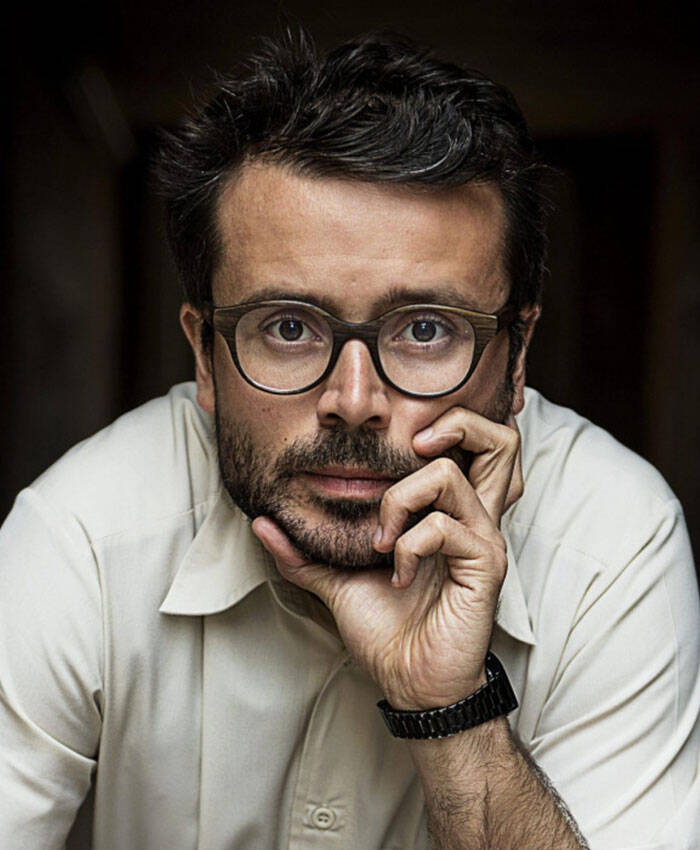
Chef Christian Puglisi has always felt the responsibility to work in a sustainable way. Whether it be his staff, future relations, his environment or the entire planet. But he says that this sense of responsibility increased when he became a father. It was a logical next step for him to set up an organic farm. In 2016 Puglisi founded Farm of Ideas, 45 minutes away from Copenhagen.
Former sous-chef NOMA, restaurateur Relae community en founder Farm of Ideas, Christian Puglisi





Modern chefs will be making a much bigger effort to help protect the environment they source their products from. They feel a sense of responsibility for transferring food awareness to their guests. Currently, the first step towards bettering our understanding of nature seems to be to put oneself in the shoes of the farmer.










Back to begin



Boundaries between nature and modern architecture are transcended. Nature literally enters the interior. Atxa understands that integration between farmer and chef is a necessity. ‘We need to start collaborating with farmers, fishermen and cultivators in order to safeguard the future. We need to work towards sustainability and awareness among food professionals. Chefs need to realise that what they do today affects tomorrow.’
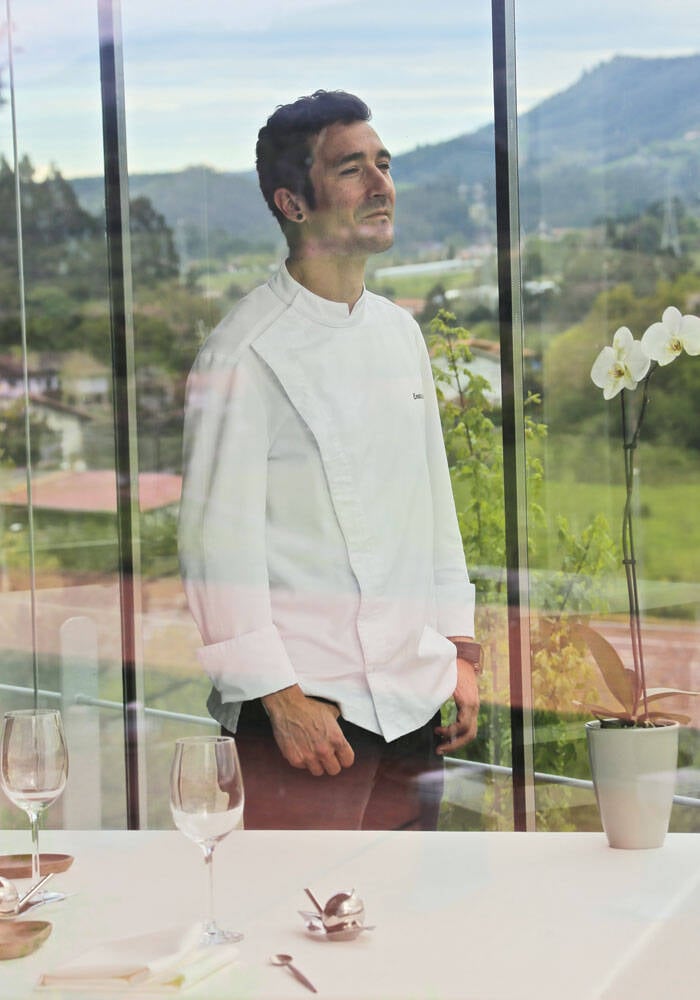
Azurmendi is not only a restaurant but a sustainable technology centre as well. And it is for good reason that chef Eneko Atxa was granted the Sustainable Restaurant Award with this ecological concept. They planted 800 trees in order to reduce CO2 emissions. Rainwater and sunlight are stored and reused for their garden and greenhouse where their own vegetables and herbs are freshly harvested.
Chef at three-Michelin starred sustainable restaurant Azurmendi, Eneko Atxa
MIXED WITH NATURE





Chef Emile van der Staak is the only client of this edible jungle. Van der Staak pays a visit to the food forest every week. In order to absorb the seasons and taste nature. A moment of reflection and inspiration. Van Eck's harvest is put on a pedestal at his restaurant De Nieuwe Winkel. De Nieuwe Winkel will open its doors this spring in a centuries-old orphanage in the Dutch city of Nijmegen. Apparently both farmer Van Eck and chef Van der Staak have turned finding hidden gems into a sport.

Voedselbos Ketelbroek in the Netherlands is home to over 350 varieties of plants, trees, shrubs and herbal plants all of which have something edible to offer. Wouter van Eck farms this food paradise but he ploughs nor sows. And he certainly doesn’t spray. These ‘fields’ are only planted and harvested endlessly. He considers it the ideal place for the lazy farmer.
Chef-botanist Emile van der Staak and food-forest expert Wouter van Eck








Every lunch and dinner is prepared with freshly harvested produce. The dishes feature these vegetables prominently. ‘For our industry, the greatest challenge for the future lies in preserving ingredients sourced from nature, because we are currently working very hard to destroy it. We are murdering, pillaging to eat,’ Mauro Colagreco shared with Food Inspiration.
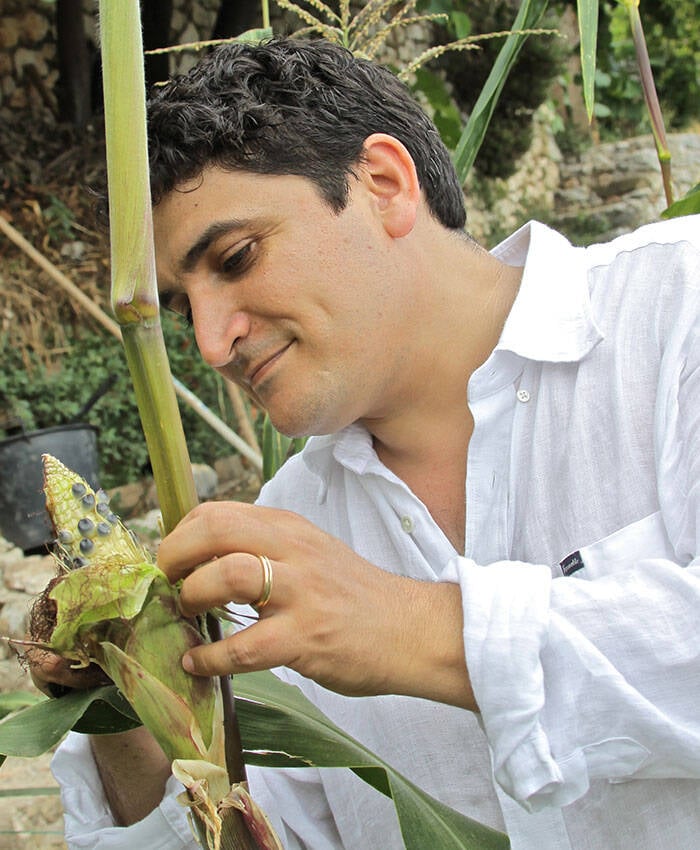
On the southern border between France and Italy, you will find three-starred restaurant Mirazur. Mirazur is located by the edge of the Mediterranean Sea, a food garden and the mountains. Chef Colagreco's menu reflects this triad. In addition, everything they serve revolves around products available in nature at that moment in time. Mirazur's vegetable garden includes 35 different tomato varieties.
Chef at the three-Michelin starred restaurant Mirazur, Mauro Colagreco









